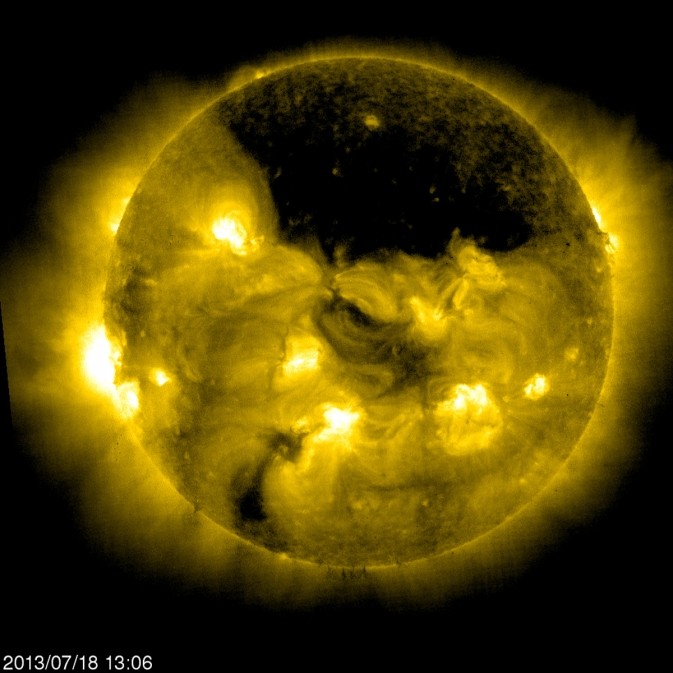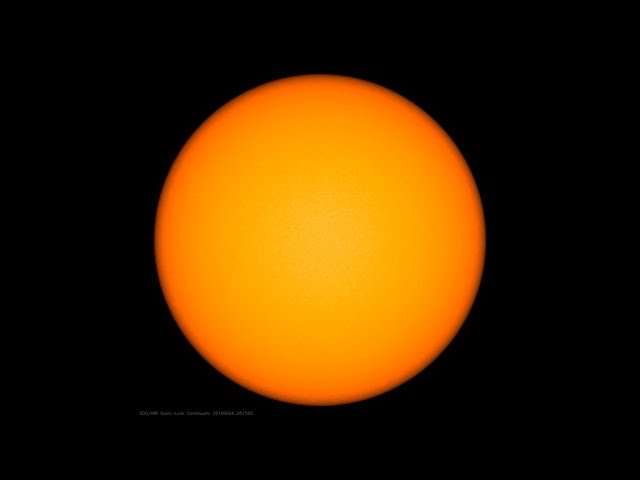It looks like you're using an Ad Blocker.
Please white-list or disable AboveTopSecret.com in your ad-blocking tool.
Thank you.
Some features of ATS will be disabled while you continue to use an ad-blocker.
share:
A solar system collision?
Big rock out of no where comes in & dusts a planet?
Planet debris spreads in orbit path, small planet becomes big debris cloud?
Might explain the erratic nature of the dimming & the period.
K~
Big rock out of no where comes in & dusts a planet?
Planet debris spreads in orbit path, small planet becomes big debris cloud?
Might explain the erratic nature of the dimming & the period.
K~
originally posted by: Phage
a reply to: TinfoilTP
That's, more or less, one of the proposals about Tabby's. Seems to be a long shot.
Well, stars start out in stellar nurseries of gas that obscure quite a bit. Maybe some stars inherit more from the nursery than others, or rarely rob the cradle taking so much nursery material that other stars cannot fully form nearby. With only two ever observed it does seem rare.
a reply to: JoshuaCox
Tabbys star has dimmed a quite the unexpected rate and last I read before this about 2 or 3 months ago and is expected to dissapear out of view in the night skies so it is an anomaly that we have yet to ascertain if there are star eaters out there other than black holes that would be quite the discovery
Tabbys star has dimmed a quite the unexpected rate and last I read before this about 2 or 3 months ago and is expected to dissapear out of view in the night skies so it is an anomaly that we have yet to ascertain if there are star eaters out there other than black holes that would be quite the discovery
edit on 5-9-2016 by BigBrotherDarkness because: (no reason given)
What about dark spots? But on a much grander scale. Recently our sun has been covered in them and also recently it has been clear of any spots? Surely
these "cooler" areas would cause significant dimming if present in larger amounts?


You get the idea............


You get the idea............
edit on 5-9-2016 by CaptainBeno because: pictures
a reply to: CaptainBeno
Your first image is of a coronal hole, which is not the same thing as a sunspot.
But, if you look at the variation in TSI through the Sun's solar cycle it amounts to about 0.1% over the 11 year cycle. So, if that's the reason, it's still a very strange star.
lasp.colorado.edu...
Your first image is of a coronal hole, which is not the same thing as a sunspot.
But, if you look at the variation in TSI through the Sun's solar cycle it amounts to about 0.1% over the 11 year cycle. So, if that's the reason, it's still a very strange star.
lasp.colorado.edu...
edit on 9/5/2016 by Phage because: (no reason given)
a reply to: CaptainBeno
Hmmm perhaps it depends on the composition of the body itself that is being consumed as all of the material conglomerate in the chain reaction or make up of stars is not always the same in the layers in which they form... the color they burn even when relative in size varies. So spectography of some sort should say what material or element is in chain reaction being consumed when producing light, not really different than in a lab when burning copper you get a green flame etc.
Hmmm perhaps it depends on the composition of the body itself that is being consumed as all of the material conglomerate in the chain reaction or make up of stars is not always the same in the layers in which they form... the color they burn even when relative in size varies. So spectography of some sort should say what material or element is in chain reaction being consumed when producing light, not really different than in a lab when burning copper you get a green flame etc.
edit on 5-9-2016 by BigBrotherDarkness because: (no reason given)
originally posted by: Snarl
If a civilization developed the technology to 'wrap' a star ... they wouldn't need a planet. Maybe if they wanted to go somewhere, they'd just use the star itself as the drive.
Basically connecting to the nearest Star or Star in the region of interest and somehow cause the Dyson Star and the Companion attractor Star to attract...
I guess reverse would be repel from companions Stars driving the Dyson sphere opposite direction.
Interesting perceptions Snarl
originally posted by: Phage
a reply to: TinfoilTP
The trouble is coming up with a mechanism which would cause any particular concentration of objects which would periodically (much less erratically) behave that way. Orbital mechanics would seem to work against such an arrangement.
Wouldn't a binary star system, in which one is a failed star, pull on the successful star's ort cloud making it behave eratically?
The thought that an alien civilization is out there building something around two suns is terrifying.
And we shouldn't try to attract their attention.
And we shouldn't try to attract their attention.
Perhaps we are discovering a phenomena about stars that we have not seen until now. Could they have a "mode" where they are luminously unstable? It
could mean huge explosions or some kind of nuclear "flickering" (have no idea of how that could be possible).
edit on 5-9-2016 by charlyv
because: spelling , where caught
Any aliens capable of building a Dyson sphere would very likely have faster then light star drive ships.
This makes me wonder if some dark areas of the universe may have whole civilizations hidden in them.
all hiding behind Dyson spheres.
Are there any dark areas with no stars close to ether of these suns.
Maybe these are new colonies building there NEW Dyson spheres.
We would never be able to see a completed Dyson sphere as it would just be dark mass. unless it passed between us and another star and that would be a vary vary rare incident.
This makes me wonder if some dark areas of the universe may have whole civilizations hidden in them.
all hiding behind Dyson spheres.
Are there any dark areas with no stars close to ether of these suns.
Maybe these are new colonies building there NEW Dyson spheres.
We would never be able to see a completed Dyson sphere as it would just be dark mass. unless it passed between us and another star and that would be a vary vary rare incident.
originally posted by: Phage
a reply to: TinfoilTP
Wouldn't a binary star system, in which one is a failed star, pull on the successful star's ort cloud making it behave eratically?
An erratic system would be unstable. It would not last long.
Ok, but there are many successful binary star systems. With one failed star not emitting a solar wind an ort cloud would not form over the duel system only the successful star, and the failed star's gravity would cause densities in this ort cloud as it orbits that are not present in our own ort cloud.
The technologies would require advanced understanding of Star functions. From what mechanisms would be required to charge or accelerate the
electromagnetic polarities of the Dyson star to make it attract or repel from other nearby Stars. To the physics involved of Dyson Star of which
cause said Star to hold celestial planetoid bodies and plasma voids in place. This physics intelligence would also allow for placement and even
relocation of planetoids and moons. Ex. MARS once being where EA*RTH is and EA*RTH then being where VENUS is, then just altering em data of Sun
pushing the out and adding MERCURY
So when moving, none of the planetoids would enter unstable failure modes and collide or drift off due to electromagnetic changes to Dyson Star...
This then allows for mechanism designs and placements if needed between planetoids connecting to Dyson Sphere. Mechanisms that would stabilize the regions of the Star system during accelerated movements...
Mechanisms would be artificial moons... ... ...
It would also provide local or distant Star data mapped that can contribute to companion Star activities of attraction and repel, allowing the electromagnetic charge up of Dyson sphere Star to reach far off Star companions electromagnetic fields for scheduled movements.
So when moving, none of the planetoids would enter unstable failure modes and collide or drift off due to electromagnetic changes to Dyson Star...
This then allows for mechanism designs and placements if needed between planetoids connecting to Dyson Sphere. Mechanisms that would stabilize the regions of the Star system during accelerated movements...
Mechanisms would be artificial moons... ... ...
It would also provide local or distant Star data mapped that can contribute to companion Star activities of attraction and repel, allowing the electromagnetic charge up of Dyson sphere Star to reach far off Star companions electromagnetic fields for scheduled movements.
new topics
-
Putin, Russia and the Great Architects of the Universe
ATS Skunk Works: 1 hours ago -
A Warning to America: 25 Ways the US is Being Destroyed
New World Order: 5 hours ago -
President BIDEN's FBI Raided Donald Trump's Florida Home for OBAMA-NORTH KOREA Documents.
Political Conspiracies: 11 hours ago
top topics
-
President BIDEN's FBI Raided Donald Trump's Florida Home for OBAMA-NORTH KOREA Documents.
Political Conspiracies: 11 hours ago, 28 flags -
A Warning to America: 25 Ways the US is Being Destroyed
New World Order: 5 hours ago, 10 flags -
Gaza Terrorists Attack US Humanitarian Pier During Construction
Middle East Issues: 17 hours ago, 8 flags -
Las Vegas UFO Spotting Teen Traumatized by Demon Creature in Backyard
Aliens and UFOs: 16 hours ago, 7 flags -
2024 Pigeon Forge Rod Run - On the Strip (Video made for you)
Automotive Discussion: 17 hours ago, 4 flags -
Is AI Better Than the Hollywood Elite?
Movies: 12 hours ago, 3 flags -
Maestro Benedetto
Literature: 12 hours ago, 1 flags -
Putin, Russia and the Great Architects of the Universe
ATS Skunk Works: 1 hours ago, 1 flags
active topics
-
Rupert Murdoch engaged at 92
People • 8 • : brodby -
University of Texas Instantly Shuts Down Anti Israel Protests
Education and Media • 267 • : FlyersFan -
"We're All Hamas" Heard at Columbia University Protests
Social Issues and Civil Unrest • 287 • : FlyersFan -
The Acronym Game .. Pt.3
General Chit Chat • 7753 • : F2d5thCavv2 -
Skinwalker Ranch and the Mystery 1.6GHz Signal
Aliens and UFOs • 144 • : brodby -
A Warning to America: 25 Ways the US is Being Destroyed
New World Order • 11 • : brodby -
European court rules human rights violated by climate inaction
Fragile Earth • 62 • : iaylyan -
What in the S.E.O. hell is this?
General Chit Chat • 27 • : reannamurphy -
Putin, Russia and the Great Architects of the Universe
ATS Skunk Works • 7 • : RussianTroll -
President BIDEN's FBI Raided Donald Trump's Florida Home for OBAMA-NORTH KOREA Documents.
Political Conspiracies • 21 • : CriticalStinker
